Books about Mokele-Mbembe and/or Mokele-Mbembe search / Livres sur Mokele-Mbembe et/ou recherche de Mokele-Mbembe
| Year | Author | Title | Description | Image |
|---|---|---|---|---|
| 1955 |
Bernard Heuvelmans |
Sur la piste des bêtes ignorées |
Scientifique, explorateur, chercheur belgo-français et considéré comme le père de la cryptozoologie. Heuvelmans était titulaire d'un diplôme en zoologie.Son ouvrage de 1958 "Sur la piste des bêtes ignorées" est considéré comme un ouvrage standard en cryptozoologie. Plus tard, il a également publié des livres sur des sujets plus spécifiques comme les serpents de mer.En 1975, il a fondé la "Société internationale de cryptozoologie" et en a été le premier président. Il a également été le premier président du Center for Fortean Zoology. En 1999, il a fait don d'environ 50 000 documents et photos au musée de zoologie de Suisse. / [Belgian-French scientist, explorer, researcher, and a considered to be the father of cryptozoology. Heuvelmans held an degree in zoology. His 1958 work "On the track of unknown animals" is considered to be an standard work in cryptozoology. Later he also published books on more specific topics like sea serpents. In 1975 he founded the "International Society of Cryptozoology" and served as its first president. He also served as the first president of the Centre for Fortean Zoology. In 1999 he donated about 50.000 documents and photos to the zoology museum in Switzerland.] |
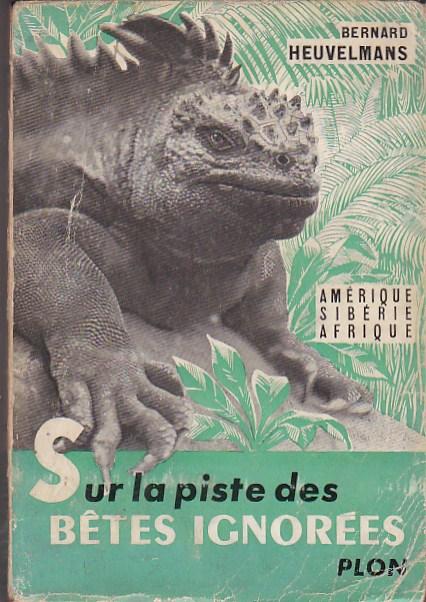 |
| 1978 |
Bernard Heuvelmans |
Les Derniers dragons d'Afrique (series: Bêtes ignorées du monde : Tome 1) |
Ce grand ouvrage de plus de 500 pages est le premier de la série intitulée "Bêtes ignorées du monde". Ce que Bernard Heuvelmans espère faire est de présenter une image aussi complète que possible de l'état actuel des études et recherches cryptozoologiques. Ainsi, l'essentiel de la vaste documentation accumulée depuis plus de 30 ans par le "Père de la cryptozoologie" sera accessible au grand public. Ce premier livre est consacré exclusivement aux "dragons" de l'Afrique. Cela commence par les serpents géants d'Afrique du Nord, le serpent qui émet des sons étranges en Afrique centrale et Groot Slang en Afrique du Sud. La deuxième et plus grande partie du volume est consacrée aux "dragons amphibies". Il commence par un aperçu géographique, avec des déclarations de témoins et des documents regroupés par régions. Enfin, la dernière partie est consacrée aux enregistrements sur les "dragons volants", les chauves-souris géantes inconnues et les ptérodactyles. / [This large work of more than 500 pages is the first in the series entitled "Unknown Animals of the World." What Bernard Heuvelmans hopes to do is to present as complete a picture as possible of the current status of cryptozoological studies and research. In this way, the essence of the vast documentation accumulated over 30 years by the "Father of Cryptozoology" will be accessible to broad public. This first book is devoted exclusively to the "dragons" of Africa. It begins with the giant serpents of North Africa,the snake which emit strange sounds in Central Africa and Groot Slang in South Africa. The second and larger part of the volume is devoted to "amphibious dragons." It begins with a geographic overview, with statements by witnesses, and documents grouped by regions. Lastly, the final portion is devoted to the records on "flying dragons," giant unknown bats and pterodactyls.] |
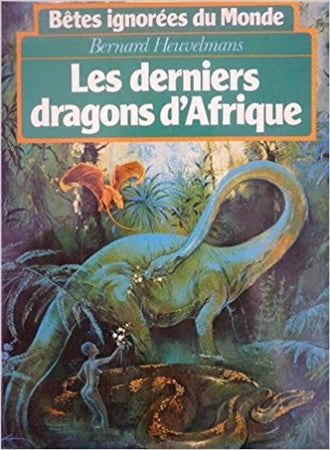 |
| 1987 |
Roy P. Mackal |
A Living dinosaur?: In search of Mokele-Mbembe |
Do strange, large land animals unknown to science exist in remote corners of the globe? Rumours, stories, and reports about queer beasts located in the deadly unexplored swamps of Central West Africa have surfaced periodically for over two hundred years. The Pygmies living in the area describe features which taken at face value are like a sauropod dinosaur. These reports have been taken seriously by Dr. Roy Mackal and provoked him to lead two expeditions to look for signs of the huge creatures referred to by some Africans as Mokele-nbembe. This book describes his expeditions into the Likouala region of the People's Republic of the Congo. They did not result in the capture or undoubted sighting of the Mokele-nbembe, but did not indicate that large unknown animals await discovery in this region, one of the largest biiopreserves in the world, still largely unexplored by westerners. In addition to the very full account of Mokele-nbembe, which Dr. Mackal believes could indeed be a kind of sauropod dinosaur, the book analyses reports of other still-known creatures inhabiting the Likouala swamps. These analyses are detailed, thorough, and provocative, leading us to conclude that there may, indeed, be several different members of the animal kingdom awaiting discovery in this vast and inhospitable region. |
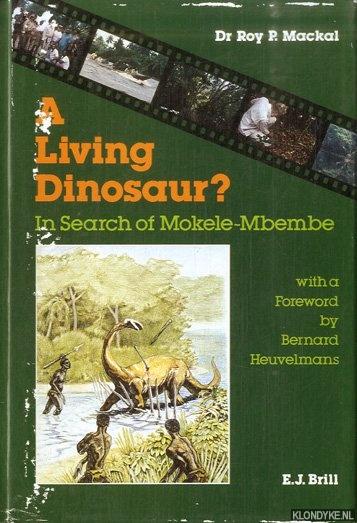 |
| 1993 |
Rory Nugent |
Drums Along the Congo: On the Trail of Mokele-Mbembe, the Last Living Dinosaur |
In the heart of the Congo, in the deep waters of Lake Tele, is rumoured to live a dinosaur-like creature called Mokele-Mbembe, the god-beast. The rumors are convincing enough to have inspired a handful of scientific expeditions over the years, including a recent solo effort by American explorer and cryptozoologist Rory Nugent. After a ritual exorcism in Brazzaville, Nugent made his way by plane, boat, and foot to the lake's muddy shores, an environment little changed since the age of the dinosaurs. Paddling and trekking for weeks, living on snakes and snails, he finally spotted a brontosaurus-like shape far across the water. But when he tried to get closer, his guides ordered him back at gunpoint, explaining that "the god can approach man, but man never approaches the god." |
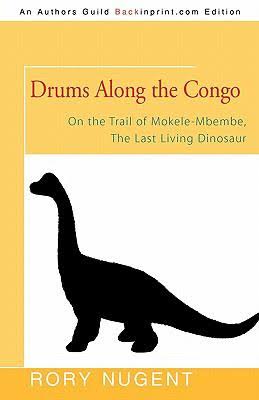 |
| 1996 |
Redmond O'Hanlon |
Congo Journey |
"Congo Journey" is an autobiographical novel by British author Redmond O'Hanlon, following his trip across Congo-Brazzaville (now Republic of the Congo), taking a friend to Lake Tele in search of Mokèlé-mbèmbé, a legendary Congo dinosaur. Travel writer Michael Shapiro considers the book as one of the "top 30 travel books of all time," and declares the book, chronicling the author's search for the legendary dinosaur, to be in the literary tradition of Joseph Conrad. O’Hanlon's adventure, he says, is by turns dangerous and funny, as he "takes the long way to the lake and nearly gets killed by a village headman", trying to save a baby gorilla, while he "battles his demons and the haunting spirits of Central Africa." According to Shapiro, O’Hanlon emerges from the jungle a changed man. The novel was republished in 1997 for United States readers as "No Mercy: A Journey to the Heart of the Congo." |
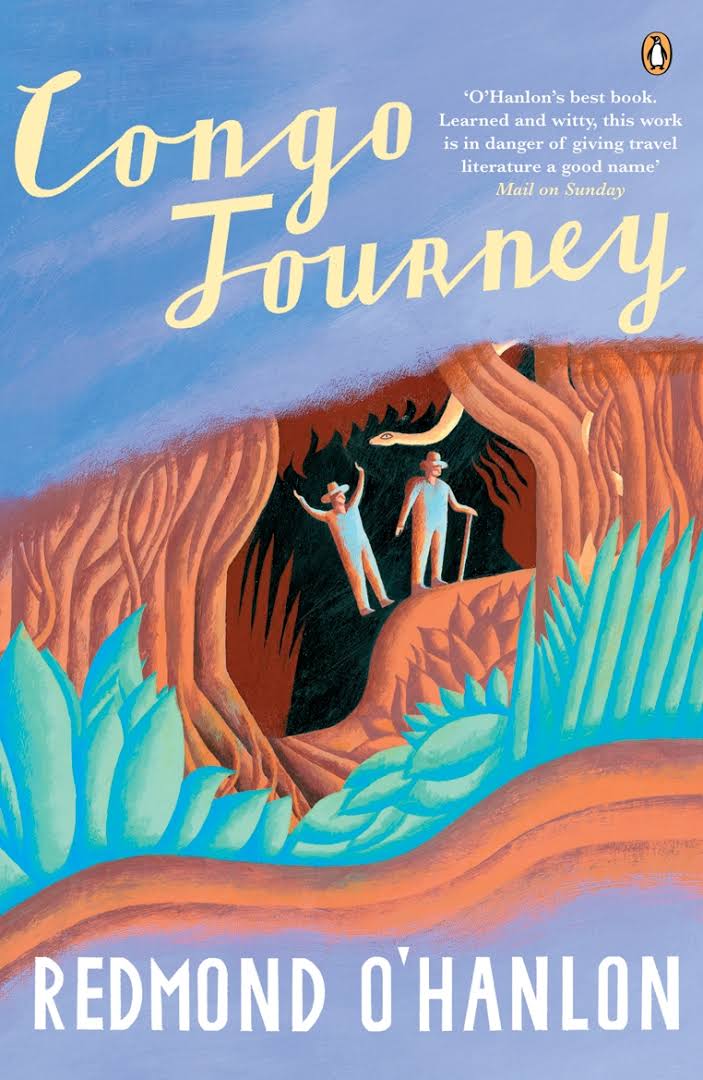 |
| 2010 |
William J Gibbons |
Mokele-Mbembe: Mystery Beast of the Congo Basin |
Explorer, cryptozoologist, and creationist Bill Gibbons has traveled to remote corners of the world in search of strange and unknown creatures. But Bill's heart is in Africa, where monstrous dinosaur-like creatures are still rumored to inhabit the vast swamps of the Congo Basin. In "Mokele-Mbembe: Mystery Beast of the Congo Basin," Gibbons provides a fascinating insight into several expeditions that have ventured forth in search of suspected living dinosaurs, including several of his own. Here you will read about many amazing eyewitness testimonies and surprise encounters with these remarkable creatures. This book will take you on a journey into a true "lost world" of pygmy tribes, dense unforgiving jungles, hidden unexplored lakes, and rivers that run for hundreds of miles into a land that time has literally forgotten. No armchair explorer, Gibbons also details several other incredible creatures that by all accounts should have been extinct eons ago, yet are still encountered today by astonished eyewitnesses in the 21st century. Join Bill as he continues on his tireless quest in search of an animal that could well be the most important scientific discovery of this century! |
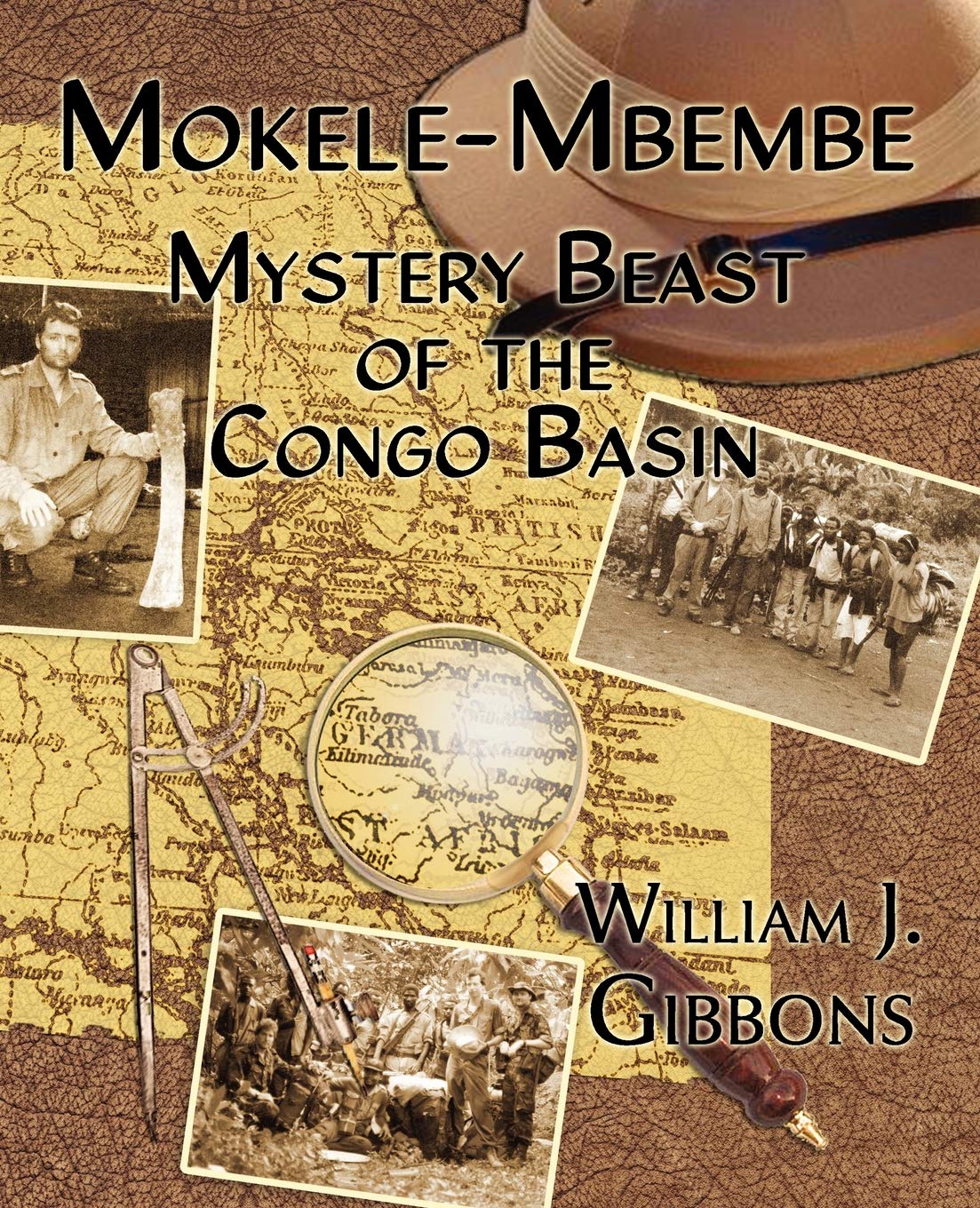 |
| 2010 |
Rick Emmer |
Mokele-Mbembe: Fact or Fiction? (Creature Scene Investigation) |
According to local legend, a modern-day African dinosaur called Mokele-mbembe lurks in the murky waters of the Congo Basin rainforest. This elephant-sized version of Diplodocus kills hippos, elephants, and humans that invade its territory in Lake Tele and vine-choked Likouala Swamp. Many cryptozoological expeditions have been conducted in this inhospitable jungle with the sole purpose of finding a living, breathing specimen of a type of animal that should have gone extinct 65 million years ago. In Mokele-mbembe: Fact or Fiction?, take a look at the evidence dinosaur hunters have collected, and decide whether Mokele-Mbembe is a real animal or just a figment of the imagination. |
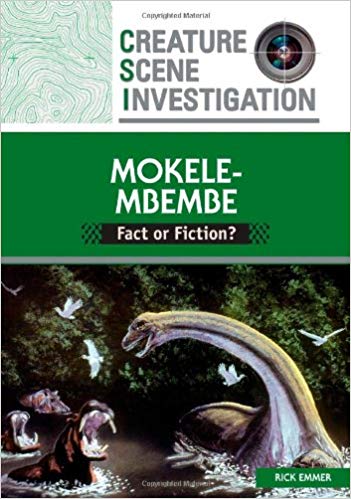 |
| 2012 |
Vortex |
The Search for Mokele-Mbembe |
Mokele-mbembe is a cryptid supposed to live in the Congo River Basin. It is widely documented in local folklore as having an elephant-like body with a long neck and tail and a small head. This description fits with the description of a small Sauropod. This gives the legend some credence with cryptozoologists who continue to this day to search for the Mokele-mbembe in the hopes it is a relic dinosaur. So far though only claimed sightings, grainy long distance video and a few photographs form the evidence for the existence of the Mokele-Mbembe. |
 |
| 2014 |
Jan E. Culbertson |
Mokele-Mbembe |
Since the beginning of time man has told stories and legends of strange creatures and monsters. These stories and legends are not unique to any one country or continent, they are universal throughout the world. But sometimes animals that were thought to be either folklore legends or extinct are discovered. The Mountain Gorilla was thought to be a myth until 1847, and the Okapi, a half zebra half antilope -like mammal was discovered within the last hundred years. Also the Coelacanth, a prehistoric fish, was thought to be extinct until 1938 when a woman caught one off the coast of Africa. In the United States we have Bigfoot; in Mexico they have the Chupacabra; in Canada the Ogopogo; in Tibet they have the Yeti; and in the West Indies the Loogaroo. In the Congo they have the Mokele-Mbembe, a large dinosaur-like animal that inhabits the Congo River. This is the fictional story of an expedition that hopes to either capture or kill the Mokele-Mbembe. Capturing or killing any large wild animal is dangerous but when the animal is a throwback to the Mesozoic Period, it is not only dangerous, it is insane! |
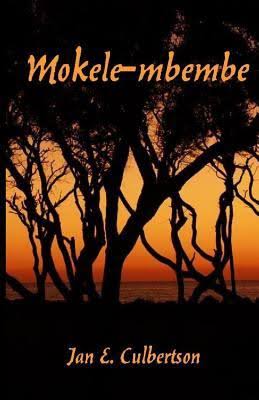 |
| 2014 |
Michel Ballot |
À la recherche du mokélé-mbembé |
Voilà plus d'un siècle que de nombreux témoignages pygmées attestent de l'existence d'un mystérieux animal qui habiterait les rivières d'Afrique centrale. Décrit par les habitants de la région comme une sorte de rhinocéros à queue de crocodile et à tête de serpent, l'animal mesurerait 15 mètres de long et ressemblerait un dinosaure. Bien qu'aucun spécimen n'ait à ce jour été découvert, Michel Ballot est bel et bien convaincu que le Mokélé-Mbembé existe et traque à travers la jungle les preuves qui permettront de le démontrer. Depuis toujours passionné par la cryptozoologie, cette science qui étudie les animaux non répertoriés par la zoologie traditionnelle, Michel Ballot a d'abord mené une carrière de juriste avant de se consacrer à l'exploration du bassin du Congo à la recherche d'espèces animales encore méconnues. Également publié en anglais sous le titre "Looking for the Mokele-Mbembe". / [For over a century, numerous Pygmy testimonies attest to the existence of a mysterious animal that inhabits the rivers of Central Africa. Described by locals as a sort of rhino with a crocodile tail and a snake head, the animal is 15 meters long and looks like a dinosaur. Although no specimen has been discovered to date, Michel Ballot is indeed convinced that the Mokélé-Mbembé exists and tracks through the jungle the evidence that will demonstrate it. Always passionate about cryptozoology, this science that studies animals not listed by traditional zoology, Michel Ballot first led a career as a lawyer before devoting himself to exploring the Congo Basin in search of animal species still unrecognized. Also published in English under the title "Looking for the Mokele-Mbembe."] |
 |
| 2017 |
Jean-Luc Brébant |
KONGO : Mon enfance à Pointe-Noire |
"J'ai eu une ferme en Afrique", cette phrase de la romancière Karen Blixen, qui rappelle le merveilleux film "Out of Africa" (1985) avec Meryl Streep et Robert Redford, me trotte dans la tête depuis des années. Elle me rappelle mon enfance en Afrique. J'ai vécu notamment au Congo entre 1978 et 1982. Je voudrais vous raconter cette histoire. Sans rentrer dans des considérations touristiques, ethnologiques ou politiques. Non juste l'histoire de mon enfance en Afrique. Comme je l'ai vécu, ce que j'en garde comme souvenirs. Autant dire tout de suite, qu'ils sont presque intacts et merveilleux. Ce livre n'a pas la prétention de couvrir tout ce qui concerne le Congo, son histoire, sa géographie, son tourisme. Il ne contient que des impressions, des ressentis, des gros plans que je veux mettre en avant. Il n’est qu’un témoignage, un reportage personnel. Un moment de vie. J’utilise des photos et des documents de l’époque. Pour plus d’authenticité. Pour les plus curieux d’entre vous, quelques notes historiques et géographiques ont été ajoutées à la fin du livre. Mais, je vous encourage à chercher sur Internet pour de plus amples informations. J’ai aussi ajouté une histoire dont j’ai entendu parler à l’époque par mon père : celle du Mokélé-mbembé, le dernier dragon africain. Un fascinant récit retraçant la recherche du Loch Ness africain. / ["I had a farm in Africa", this sentence by the novelist Karen Blixen, which recalls the wonderful film "Out of Africa" (1985) with Meryl Streep and Robert Redford, has been in my head for years. It reminds me of my childhood in Africa. I lived in particular in Congo between 1978 and 1982. I would like to tell you this story. Without going into tourist, ethnological or political considerations. Not just the story of my childhood in Africa. As I lived, what I keep as memories. Suffice to say right away, that they are almost intact and wonderful. This book does not pretend to cover everything about the Congo, its history, its geography, its tourism. It only contains impressions, feelings, close-ups that I want to highlight. It is only a testimony, a personal report. A moment of life. I use photos and documents from the time. For more authenticity. For the more curious among you, some historical and geographic notes have been added at the end of the book. But, I encourage you to search the Internet for more information. I also added a story I heard about at the time from my father: that of the Mokélé-mbembé, the last African dragon. A fascinating story retracing the search for the African Loch Ness.] |
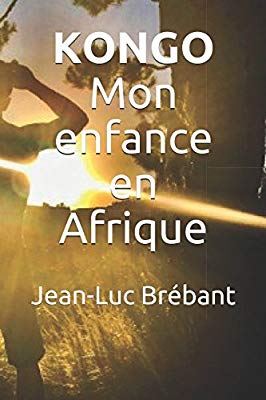 |
| 2019 |
Ryan J. Lyons |
Drums and Dragons: A Field Guide to Mokele-mbembe and Other Living Dinosaurs in Africa (A Fictional Natural History of Cryptids Book 1) (English Edition) |
Legends of living dinosaurs in Africa have inspired the fiction of writers such as Sir Arthur Conan Doyle, but amateur monster hunter Walter Spink takes these tales of African dragons seriously. After failing to prove the existence of dragons with partial remains, Walter and his reluctant assistant, Matt Preston, travel to Africa, where they encounter a series of live dragons including pterosaurs called sasabonsam, Styracosaurus-like horned ngoubou, and Brontosaurus-like mokele-mbembe. Walter decides to live in the African bush and study his newfound dragons’ behavior in the wild, but conducting his research proves more challenging than it sounds. If Walter does not get himself killed by turning his back on a carnivorous sasabonsam, the other dragons might still trample him under foot. To make matters worse, a wily witchdoctor will do anything to chase Walter away from the dragons—including cursing him. And even if fetish magic does not stop him, a big game hunter who’s heard rumors of living dinosaurs might end Walter’s work by shooting his research subjects back to extinction. |
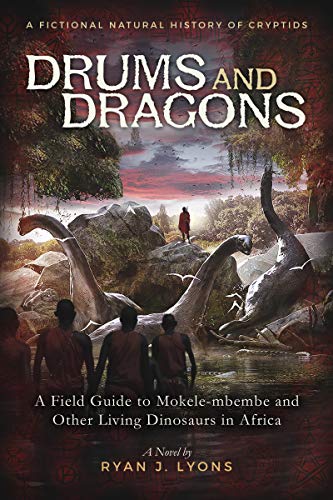 |

MOKELE - MBEMBE
Expeditions, observations, and books
The map below indicates exact or approximate locations of the following places:
|
|
Indicates places to which expeditions in search of the Mokele-Mbembe have been sent or organised but which have not come up with any conclusive observations, eyewitness accounts or second-hand reports of Mokele-Mbembe encounters.
|
 |
Indicates places where animals whose description matches that of the Mokele-Mbembe have been observed, and/or reports of such observations have been obtained, but to which no formal expedition has been organised with the sole purpose of finding the animal.
|
 |
Indicates places to which Mokele-Mbembe research expeditions have been organised and where some or all members of these expeditions have either encountered what may have been the Mokele-Mbembe (known localy under different names) or where expedition members obtained first- or second-hand accounts of such encounters. |
Underneath the map you can also find a listing of books (in English and/or in French) that have been published within the last 40 years or so on the subject.
Copyright ©Wojciech Bobilewicz 2020
You are visitor number
You are unique visitor number
1955 - Bernard Heuvelmans - "Sur la piste des bêtes ignorées"
 |
Scientifique, explorateur, chercheur belgo-français et considéré comme le père de la cryptozoologie. Heuvelmans était titulaire d'un diplôme en zoologie.Son ouvrage de 1958 "Sur la piste des bêtes ignorées" est considéré comme un ouvrage standard en cryptozoologie. Plus tard, il a également publié des livres sur des sujets plus spécifiques comme les serpents de mer.En 1975, il a fondé la "Société internationale de cryptozoologie" et en a été le premier président. Il a également été le premier président du Center for Fortean Zoology. En 1999, il a fait don d'environ 50 000 documents et photos au musée de zoologie de Suisse. / [Belgian-French scientist, explorer, researcher, and a considered to be the father of cryptozoology. Heuvelmans held an degree in zoology. His 1958 work "On the track of unknown animals" is considered to be an standard work in cryptozoology. Later he also published books on more specific topics like sea serpents. In 1975 he founded the "International Society of Cryptozoology" and served as its first president. He also served as the first president of the Centre for Fortean Zoology. In 1999 he donated about 50.000 documents and photos to the zoology museum in Switzerland.]
1978 - Bernard Heuvelmans - "Les Derniers dragons d'Afrique" (series: "Bêtes ignorées du monde: Tome 1")
 |
Ce grand ouvrage de plus de 500 pages est le premier de la série intitulée "Bêtes ignorées du monde". Ce que Bernard Heuvelmans espère faire est de présenter une image aussi complète que possible de l'état actuel des études et recherches cryptozoologiques. Ainsi, l'essentiel de la vaste documentation accumulée depuis plus de 30 ans par le "Père de la cryptozoologie" sera accessible au grand public. Ce premier livre est consacré exclusivement aux "dragons" de l'Afrique. Cela commence par les serpents géants d'Afrique du Nord, le serpent qui émet des sons étranges en Afrique centrale et Groot Slang en Afrique du Sud. La deuxième et plus grande partie du volume est consacrée aux "dragons amphibies". Il commence par un aperçu géographique, avec des déclarations de témoins et des documents regroupés par régions. Enfin, la dernière partie est consacrée aux enregistrements sur les "dragons volants", les chauves-souris géantes inconnues et les ptérodactyles. / [This large work of more than 500 pages is the first in the series entitled "Unknown Animals of the World." What Bernard Heuvelmans hopes to do is to present as complete a picture as possible of the current status of cryptozoological studies and research. In this way, the essence of the vast documentation accumulated over 30 years by the "Father of Cryptozoology" will be accessible to broad public. This first book is devoted exclusively to the "dragons" of Africa. It begins with the giant serpents of North Africa,the snake which emit strange sounds in Central Africa and Groot Slang in South Africa. The second and larger part of the volume is devoted to "amphibious dragons." It begins with a geographic overview, with statements by witnesses, and documents grouped by regions. Lastly, the final portion is devoted to the records on "flying dragons," giant unknown bats and pterodactyls.]
1987- Roy P. Mackal - "A Living dinosaur?: In search of Mokele-Mbembe"
 |
Do strange, large land animals unknown to science exist in remote corners of the globe? Rumours, stories, and reports about queer beasts located in the deadly unexplored swamps of Central West Africa have surfaced periodically for over two hundred years. The Pygmies living in the area describe features which taken at face value are like a sauropod dinosaur. These reports have been taken seriously by Dr. Roy Mackal and provoked him to lead two expeditions to look for signs of the huge creatures referred to by some Africans as Mokele-nbembe. This book describes his expeditions into the Likouala region of the People's Republic of the Congo. They did not result in the capture or undoubted sighting of the Mokele-nbembe, but did not indicate that large unknown animals await discovery in this region, one of the largest biiopreserves in the world, still largely unexplored by westerners. In addition to the very full account of Mokele-nbembe, which Dr. Mackal believes could indeed be a kind of sauropod dinosaur, the book analyses reports of other still-known creatures inhabiting the Likouala swamps. These analyses are detailed, thorough, and provocative, leading us to conclude that there may, indeed, be several different members of the animal kingdom awaiting discovery in this vast and inhospitable region.
1993 - Rory Nugent - "Drums Along the Congo: On the Trail of Mokele-Mbembe, the Last Living Dinosaur"
 |
In the heart of the Congo, in the deep waters of Lake Tele, is rumoured to live a dinosaur-like creature called Mokele-Mbembe, the god-beast. The rumors are convincing enough to have inspired a handful of scientific expeditions over the years, including a recent solo effort by American explorer and cryptozoologist Rory Nugent. After a ritual exorcism in Brazzaville, Nugent made his way by plane, boat, and foot to the lake's muddy shores, an environment little changed since the age of the dinosaurs. Paddling and trekking for weeks, living on snakes and snails, he finally spotted a brontosaurus-like shape far across the water. But when he tried to get closer, his guides ordered him back at gunpoint, explaining that "the god can approach man, but man never approaches the god."
1996 - Redmond O'Hanlon - "Congo Journey"
 |
"Congo Journey" is an autobiographical novel by British author Redmond O'Hanlon, following his trip across Congo-Brazzaville (now Republic of the Congo), taking a friend to Lake Tele in search of Mokèlé-mbèmbé, a legendary Congo dinosaur. Travel writer Michael Shapiro considers the book as one of the "top 30 travel books of all time," and declares the book, chronicling the author's search for the legendary dinosaur, to be in the literary tradition of Joseph Conrad. O’Hanlon's adventure, he says, is by turns dangerous and funny, as he "takes the long way to the lake and nearly gets killed by a village headman", trying to save a baby gorilla, while he "battles his demons and the haunting spirits of Central Africa." According to Shapiro, O’Hanlon emerges from the jungle a changed man. The novel was republished in 1997 for United States readers as "No Mercy: A Journey to the Heart of the Congo."
2010 - William J Gibbons - "Mokele-Mbembe: Mystery Beast of the Congo Basin"
 |
Explorer, cryptozoologist, and creationist Bill Gibbons has traveled to remote corners of the world in search of strange and unknown creatures. But Bill's heart is in Africa, where monstrous dinosaur-like creatures are still rumored to inhabit the vast swamps of the Congo Basin. In "Mokele-Mbembe: Mystery Beast of the Congo Basin," Gibbons provides a fascinating insight into several expeditions that have ventured forth in search of suspected living dinosaurs, including several of his own. Here you will read about many amazing eyewitness testimonies and surprise encounters with these remarkable creatures. This book will take you on a journey into a true "lost world" of pygmy tribes, dense unforgiving jungles, hidden unexplored lakes, and rivers that run for hundreds of miles into a land that time has literally forgotten. No armchair explorer, Gibbons also details several other incredible creatures that by all accounts should have been extinct eons ago, yet are still encountered today by astonished eyewitnesses in the 21st century. Join Bill as he continues on his tireless quest in search of an animal that could well be the most important scientific discovery of this century!
2010 - Rick Emmer - "Mokele-Mbembe: Fact or Fiction? (Creature Scene Investigation)"
 |
According to local legend, a modern-day African dinosaur called Mokele-mbembe lurks in the murky waters of the Congo Basin rainforest. This elephant-sized version of Diplodocus kills hippos, elephants, and humans that invade its territory in Lake Tele and vine-choked Likouala Swamp. Many cryptozoological expeditions have been conducted in this inhospitable jungle with the sole purpose of finding a living, breathing specimen of a type of animal that should have gone extinct 65 million years ago. In Mokele-mbembe: Fact or Fiction?, take a look at the evidence dinosaur hunters have collected, and decide whether Mokele-Mbembe is a real animal or just a figment of the imagination.
2012 - Vortex - "The Search for Mokele-Mbembe"
 |
Mokele-mbembe is a cryptid supposed to live in the Congo River Basin. It is widely documented in local folklore as having an elephant-like body with a long neck and tail and a small head. This description fits with the description of a small Sauropod. This gives the legend some credence with cryptozoologists who continue to this day to search for the Mokele-mbembe in the hopes it is a relic dinosaur. So far though only claimed sightings, grainy long distance video and a few photographs form the evidence for the existence of the Mokele-Mbembe.
2014 - Jan E. Culbertson - "Mokele-Mbembe"
 |
Since the beginning of time man has told stories and legends of strange creatures and monsters. These stories and legends are not unique to any one country or continent, they are universal throughout the world. But sometimes animals that were thought to be either folklore legends or extinct are discovered. The Mountain Gorilla was thought to be a myth until 1847, and the Okapi, a half zebra half antilope -like mammal was discovered within the last hundred years. Also the Coelacanth, a prehistoric fish, was thought to be extinct until 1938 when a woman caught one off the coast of Africa. In the United States we have Bigfoot; in Mexico they have the Chupacabra; in Canada the Ogopogo; in Tibet they have the Yeti; and in the West Indies the Loogaroo. In the Congo they have the Mokele-Mbembe, a large dinosaur-like animal that inhabits the Congo River. This is the fictional story of an expedition that hopes to either capture or kill the Mokele-Mbembe. Capturing or killing any large wild animal is dangerous but when the animal is a throwback to the Mesozoic Period, it is not only dangerous, it is insane!
2014 - Michel Ballot - "À la recherche du mokélé-mbembé"
 |
Voilà plus d'un siècle que de nombreux témoignages pygmées attestent de l'existence d'un mystérieux animal qui habiterait les rivières d'Afrique centrale. Décrit par les habitants de la région comme une sorte de rhinocéros à queue de crocodile et à tête de serpent, l'animal mesurerait 15 mètres de long et ressemblerait un dinosaure. Bien qu'aucun spécimen n'ait à ce jour été découvert, Michel Ballot est bel et bien convaincu que le Mokélé-Mbembé existe et traque à travers la jungle les preuves qui permettront de le démontrer. Depuis toujours passionné par la cryptozoologie, cette science qui étudie les animaux non répertoriés par la zoologie traditionnelle, Michel Ballot a d'abord mené une carrière de juriste avant de se consacrer à l'exploration du bassin du Congo à la recherche d'espèces animales encore méconnues. Également publié en anglais sous le titre "Looking for the Mokele-Mbembe". / [For over a century, numerous Pygmy testimonies attest to the existence of a mysterious animal that inhabits the rivers of Central Africa. Described by locals as a sort of rhino with a crocodile tail and a snake head, the animal is 15 meters long and looks like a dinosaur. Although no specimen has been discovered to date, Michel Ballot is indeed convinced that the Mokélé-Mbembé exists and tracks through the jungle the evidence that will demonstrate it. Always passionate about cryptozoology, this science that studies animals not listed by traditional zoology, Michel Ballot first led a career as a lawyer before devoting himself to exploring the Congo Basin in search of animal species still unrecognized. Also published in English under the title "Looking for the Mokele-Mbembe."]
2017 - Jean-Luc Brébant - "KONGO : Mon enfance à Pointe-Noire"
 |
"J'ai eu une ferme en Afrique", cette phrase de la romancière Karen Blixen, qui rappelle le merveilleux film "Out of Africa" (1985) avec Meryl Streep et Robert Redford, me trotte dans la tête depuis des années. Elle me rappelle mon enfance en Afrique. J'ai vécu notamment au Congo entre 1978 et 1982. Je voudrais vous raconter cette histoire. Sans rentrer dans des considérations touristiques, ethnologiques ou politiques. Non juste l'histoire de mon enfance en Afrique. Comme je l'ai vécu, ce que j'en garde comme souvenirs. Autant dire tout de suite, qu'ils sont presque intacts et merveilleux. Ce livre n'a pas la prétention de couvrir tout ce qui concerne le Congo, son histoire, sa géographie, son tourisme. Il ne contient que des impressions, des ressentis, des gros plans que je veux mettre en avant. Il n’est qu’un témoignage, un reportage personnel. Un moment de vie. J’utilise des photos et des documents de l’époque. Pour plus d’authenticité. Pour les plus curieux d’entre vous, quelques notes historiques et géographiques ont été ajoutées à la fin du livre. Mais, je vous encourage à chercher sur Internet pour de plus amples informations. J’ai aussi ajouté une histoire dont j’ai entendu parler à l’époque par mon père : celle du Mokélé-mbembé, le dernier dragon africain. Un fascinant récit retraçant la recherche du Loch Ness africain. / ["I had a farm in Africa", this sentence by the novelist Karen Blixen, which recalls the wonderful film "Out of Africa" (1985) with Meryl Streep and Robert Redford, has been in my head for years. It reminds me of my childhood in Africa. I lived in particular in Congo between 1978 and 1982. I would like to tell you this story. Without going into tourist, ethnological or political considerations. Not just the story of my childhood in Africa. As I lived, what I keep as memories. Suffice to say right away, that they are almost intact and wonderful. This book does not pretend to cover everything about the Congo, its history, its geography, its tourism. It only contains impressions, feelings, close-ups that I want to highlight. It is only a testimony, a personal report. A moment of life. I use photos and documents from the time. For more authenticity. For the more curious among you, some historical and geographic notes have been added at the end of the book. But, I encourage you to search the Internet for more information. I also added a story I heard about at the time from my father: that of the Mokélé-mbembé, the last African dragon. A fascinating story retracing the search for the African Loch Ness.]
2019 - Ryan J. Lyons - "Drums and Dragons: A Field Guide to Mokele-mbembe and Other Living Dinosaurs in Africa" (A Fictional Natural History of Cryptids Book 1) (English Edition)
 |
Legends of living dinosaurs in Africa have inspired the fiction of writers such as Sir Arthur Conan Doyle, but amateur monster hunter Walter Spink takes these tales of African dragons seriously. After failing to prove the existence of dragons with partial remains, Walter and his reluctant assistant, Matt Preston, travel to Africa, where they encounter a series of live dragons including pterosaurs called sasabonsam, Styracosaurus-like horned ngoubou, and Brontosaurus-like mokele-mbembe. Walter decides to live in the African bush and study his newfound dragons’ behavior in the wild, but conducting his research proves more challenging than it sounds. If Walter does not get himself killed by turning his back on a carnivorous sasabonsam, the other dragons might still trample him under foot. To make matters worse, a wily witchdoctor will do anything to chase Walter away from the dragons—including cursing him. And even if fetish magic does not stop him, a big game hunter who’s heard rumors of living dinosaurs might end Walter’s work by shooting his research subjects back to extinction
